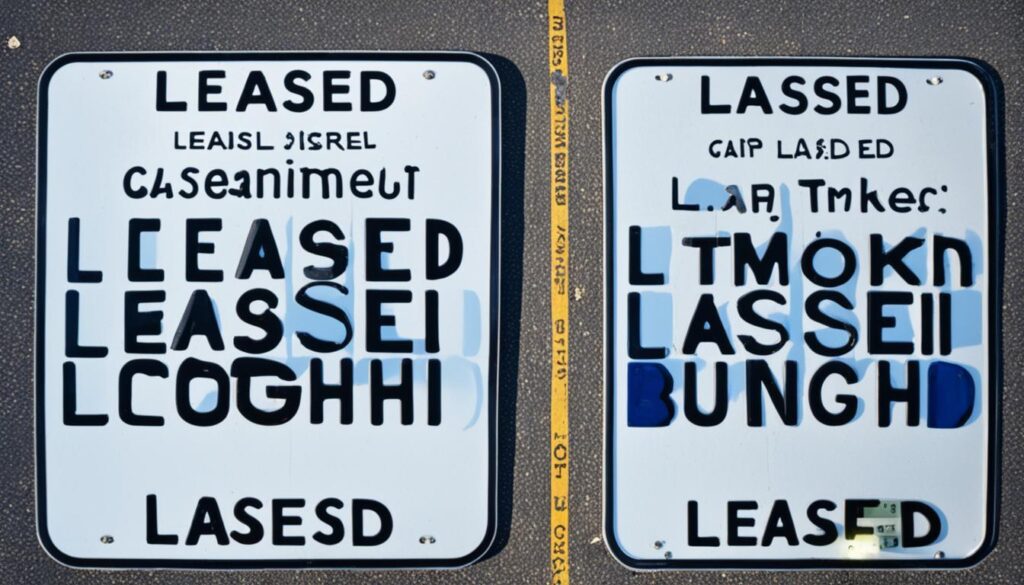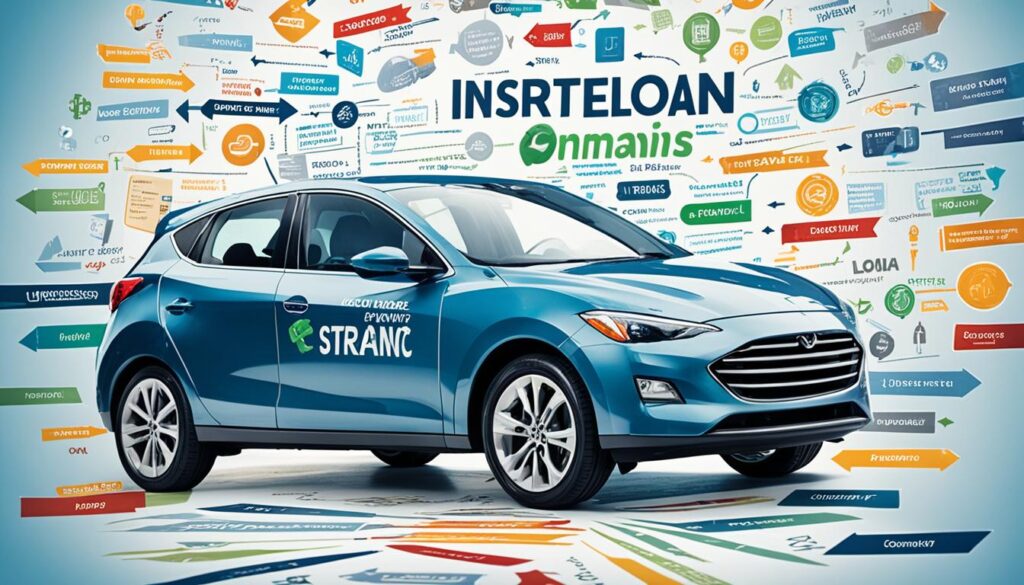Buying a car often involves thinking about how to finance it. Let’s look at your options in getting your dream car.
A bank loan is one way. It means taking money from a bank to pay for your car right away. You then slowly pay back that money with interest. Bank loans can have good interest rates, perfect for those who want to own their car fully.
Another choice is leasing. Leasing is like renting a car for a while. You pay a monthly fee that’s usually less than buying the car would cost. This way, you can get a car and then switch to a newer one when your lease is up.
If you prefer, you can go with dealership financing. Here, the dealer finds a loan for you with their lenders. It’s a simple way to finance your car while you’re at the dealer, making the process faster and easier.
Which option is best depends on what you want and can afford. Bank loans give you full ownership and more choice. Leasing means smaller payments but you won’t own the car. Dealer financing, meanwhile, is easy and quick.
Next, we’ll look closer at each financing option. We want to give you all the details on how car financing works. With the right knowledge, you can make the best choice for buying your next car.
Understanding How Car Financing Works
Many buyers choose to finance their car when buying. Car financing means taking a loan to pay for the car and then paying that loan back over time.
To start, you need to know how much you want to borrow. This includes the car’s price and any extra costs. You can choose between getting a loan from a bank or from the dealer.
Getting a loan directly from a bank or credit union is called direct lending. This way, you know if you qualify for a loan before you shop. You pay back the loan to the bank or credit union in monthly payments.
But, you can also get the loan through the car dealer, known as dealership financing. The dealer works with different lenders to offer you loans. It’s convenient because you deal with everything in one place.
Understanding your loan’s details is crucial. You need to know the interest rate, the monthly payment, and any extra fees. Always look at all your loan options. Pay attention to the loan term, interest rates, and any special deals the lenders or dealers have.
Choosing the right car financing can help you stay within your budget. Knowing the process and what to look for can make a big difference.
^This image shows how car financing works. It gives a clear view of the main steps: getting approved for a loan, paying it back, and owning the car.
Factors to Consider Before Buying or Leasing a Car
Before you commit to buying or leasing a car, take a moment to think. Several key points can guide you to the best financing deal. By looking into these areas, you ensure your choice fits your needs and wants.
Check Your Creditworthiness
First, review your credit report. It’s a big player in what financing options you can get. Your credit history is checked by lenders and leasing companies. This check decides your borrowing risk. Good credit can mean better loan terms, lower interest rates, and great leasing deals.
Compare “Out-the-Door” Prices
Knowing the “out-the-door” price is key. This price includes everything needed to get the car, like sales tax and fees. Getting this price from each dealer in writing helps in comparing deals fairly. It also prevents any surprises later.
Calculate Total Cost
Don’t just look at the monthly payments. The total cost of buying or leasing includes many factors. You need to consider the main cost or monthly lease payments, interest rates, and extra costs for insurance and maintenance. Looking at the big picture helps in understanding if you can afford the car.
Save for a Down Payment
Saving for a down payment can cut down future expenses. A down payment is money paid upfront when buying or leasing. It reduces what you need to finance. A good down payment could lower monthly payments and save you on interest during financing.
Think through these points before deciding to buy or lease a car. They are important for your financial health and goals. Checking your credit, knowing out-the-door prices, understanding total costs, and having a down payment plan help find the best deal for you.

Understanding the Trade-In Process
Many buyers trade in their old car when they purchase a new one. It’s crucial to know how the trade-in process works for a fair deal. Start by looking up the car trade-in value online to get an initial offer. Good websites like NADA Guides, Edmunds, and Kelley Blue Book can help with this.
It’s smart to talk about your trade-in after you’ve settled on a price for your new car. This way, you focus on getting the best trade-in value without the new car’s price throwing you off. You should also check if you have negative equity on your old car. Negative equity happens if you owe more on the car than it’s worth now. Knowing about this can help you avoid bad financial surprises.
Researching Trade-In Value
Finding out your car’s trade-in value is a key step. Use sites like NADA Guides, Edmunds, and Kelley Blue Book for help. They look at the car’s details, like the brand, model, year, condition, miles, and where the car is.
Enter your car’s info on these websites to see an estimated trade-in value. Remember, this is just a starting point. The final offer could be different if you sell to a dealership. Still, having this info helps you negotiate better and get a fair price.
Negotiating the Trade-In
When you talk about your trade-in, keep it separate from the new car sale. First, get a good price for the new car without mentioning your old one. After that’s set, discuss your trade-in.
Dealers often lower the new car’s price using your trade-in. Be careful, and make sure your old car’s trade-in value is fair. Knowledge from trusted sources gives you confidence in negotiating. You can reject lowball offers.
Your aim is a high trade-in value and the best deal on your new car. Research, patience, and smart negotiation separate from discussing the new car can lead to a good trade-in outcome.
Sample Trade-In Value Comparison
| Make | Model | Year | Mileage | Condition | Trade-In Value |
|---|---|---|---|---|---|
| Honda | Accord | 2017 | 40,000 | Excellent | $12,000 |
| Toyota | Camry | 2016 | 50,000 | Good | $10,000 |
| Ford | Focus | 2015 | 60,000 | Fair | $8,000 |
Table: Sample Trade-In Value Comparison
This table compares trade-in values for different cars. Your actual trade-in value can differ. It depends on things like the market and how a dealership appraises your car.
Knowing how to handle the trade-in process, researching values, and negotiating wisely can get you a fair deal on your old car.
Financing a Car
There are two big ways to finance a car: direct lending and dealership financing. Each has its own good points and things to think about.
Direct Lending:
With direct lending, you borrow money from a bank or credit union to buy the car. This lets buyers get their loan details upfront, making it easy to look for the best deal. Shopping around means you could find the lowest interest rates. It also offers a clear view of the process.
Dealership Financing:
Dealership financing means the car seller helps set up the loan for you. The dealer offers different financing options, often with deals from the car maker itself. For many buyers, this is a quick and easy way to deal with the loan while buying the car.
Deciding on how to finance your car is up to what you prefer and what works best for you. When picking, think about the interest rates, the loan terms, how easy it is, and any special deals from the dealer.

Next, let’s look at a table comparing direct lending and dealership financing:
| Criteria | Direct Lending | Dealership Financing |
|---|---|---|
| Application Process | Apply for a loan with a bank or credit union | Financing arrangements made through the dealership |
| Interest Rates | Varies based on creditworthiness and lender | May have special programs and incentives |
| Loan Terms | Based on agreement with the lender | Available options offered by the dealership |
| Convenience | Shop around and compare offers from different lenders | Complete financing process at the dealership |
| Special Programs | N/A | May have manufacturer-sponsored programs |
This table is a quick guide to compare direct and dealership financing. It helps you pick the best way to finance your car.
Leasing a Car
Leasing a car lets you pay for the right to use it for a set time and distance. This is for people who want lower monthly costs and to drive newer cars often.
Monthly lease payments are less than buying because you’re only paying for the car’s used part. This makes it more affordable for many.
When you lease, think about your driving. Leases have mileage limits. Going over these limits can mean extra charges. So, pick a lease that matches how much you drive each year to avoid these fees.
Benefits of Leasing a Car:
- Lower monthly payments compared to traditional financing
- Ability to drive a new car every few years, enjoying the latest features and technology
- Reduced maintenance and repair costs as the vehicle is typically covered under warranty
- Flexibility to choose a lease term that suits personal preferences and needs
Considerations for Leasing a Car:
- Mileage restrictions that can result in additional fees if exceeded
- Excess wear and tear fees at the end of the lease if the car does not meet specific condition standards
- Limited customization options as the car needs to be returned in its original condition
- No ownership equity or trade-in value at the end of the lease unless there is an option to purchase the vehicle
At the lease end, the car goes back unless you buy it. Then, you can choose a new lease or a different way to get a car.
| Benefits of Leasing a Car | Considerations for Leasing a Car |
|---|---|
| Lower monthly payments compared to traditional financing | Mileage restrictions that can result in additional fees if exceeded |
| Ability to drive a new car every few years, enjoying the latest features and technology | Excess wear and tear fees at the end of the lease if the car does not meet specific condition standards |
| Reduced maintenance and repair costs as the vehicle is typically covered under warranty | Limited customization options as the car needs to be returned in its original condition |
| Flexibility to choose a lease term that suits personal preferences and needs | No ownership equity or trade-in value at the end of the lease unless there is an option to purchase the vehicle |
Signing the Paperwork
After choosing how to finance the car, the next step is signing paperwork. Buyers need to look over and understand the car financing paperwork and contract terms carefully. This happens before they close the deal.
It’s essential to read the loan or lease agreement closely before signing. Looking at the details lets buyers know about all the contract terms. They understand any duties or limits they’re agreeing to.
Buyers must make sure the terms they agree to are final before taking the car home. This avoids any surprises or changes later on.
When signing, ask about extra costs or fees. Dealers might suggest add-ons or credit insurance. Knowing these costs helps make a better decision.
Taking time to understand the paperwork is key. It helps buyers match their finance plan with their money goals.
The Importance of Understanding the Paperwork
Knowing your car finance documents is important. Here’s why:
- It ensures you understand your rights, responsibilities, and obligations.
- Helps avoid unexpected fees during the financing.
- It protects you legally by checking if the deal is fair and follows the law.
- Let’s you accurately plan your budget and see the true cost of the agreement.
So, it’s important to spend time understanding the car financing paperwork. Don’t sign anything until you’re clear and have asked all your questions.
| Benefits of Reviewing Car Financing Paperwork | Consequences of Not Reviewing Car Financing Paperwork |
|---|---|
| Clear understanding of rights and obligations | Potential misunderstandings and lack of clarity |
| Avoidance of surprises and extra costs | Potential for unexpected fees or expenses |
| Ensuring compliance with laws and regulations | Potential legal and financial risks |
| Accurate financial planning and budgeting | Difficulty in managing expenses |
After Getting the Car
Buying a new car comes with important tasks for ownership and care. Taking good care of it means it will last longer and you’ll avoid problems. Here’s what you should remember:
Making Regular Loan or Lease Payments
For those who finance or lease, keeping up with payments is key. It helps keep a good credit score and prevents late fees. Consider automatic payments or reminders to never miss a payment.
Complying with Insurance Requirements
Car insurance is a must in many places. It’s important for your safety and covers damages. Check your policy to make sure it meets all requirements and review it often to get the best deal.
Keeping Up with Regular Maintenance and Repairs
Regular maintenance and quick repairs are vital for safety. Always follow the maintenance plan your car maker suggests. This includes oil changes, checking brakes, and tire rotation.
Keeping your car in good shape can avoid costly fixes later on. Save all maintenance records. They’re useful for warranties or when you sell your car.
Also, keep money set aside for sudden repairs. This ensures you’re ready for any unexpected car expenses. With care and planning, your car will stay reliable and safe for a long time.
| Ownership and Maintenance Checklist |
|---|
| Making regular loan or lease payments |
| Complying with insurance requirements |
| Following the recommended maintenance schedule |
| Promptly addressing mechanical issues and warning lights |
| Keeping records of maintenance and repairs |
| Setting aside a budget for unexpected repairs |
Conclusion
Learning about different car finance options is crucial for making a smart choice. It ensures the decision fits your budget and life. Think about your credit, the car’s value when you trade it in, and the full cost of the finance deal. Take your time to compare deals. This way, you’ll find the perfect one for you.
Car finance lets you drive your dream car without paying all at once. It’s flexible, offering various ways to pay and for how long. But, always read the deal’s fine print first. Be clear on all the terms to avoid surprises.
Don’t overlook other costs like insurance, upkeep, and fixes. There’s more to a car than its buying price. Being ready for these additional costs is key for a smooth ride. And, remember to keep up with your payments. This is vital for your credit score and to avoid trouble.
In the end, car finance opens up new car possibilities for you. Take your time to explore your options. Do your research and ask for help when needed. This will lead to a financing choice that suits you and your future.
FAQ
What are my car financing options?
Car buyers have different ways to pay for their cars. They can choose to get a bank loan, lease the car, or use the dealership’s financing.
How does car financing work?
Financing a car means getting a loan to buy it. Then, you pay back the loan over time.
What factors should I consider before buying or leasing a car?
When deciding to buy or lease, think about your credit and the car’s full price. Also, consider how much the financing will cost you.
How do I determine the trade-in value of my old car?
To find the trade-in value, check sites like NADA Guides, Edmunds, or Kelley Blue Book.
What options do I have for car financing?
Buyers can choose between getting a loan themselves or using the dealer’s financing when buying a car.
What is leasing a car?
Leasing lets you drive a car for a set time without owning it. You pay for its use during that time.
What should I know before signing the paperwork for car financing?
Before you sign, make sure you understand the loan or leasing agreement fully. Know all the costs involved.
What are the responsibilities after getting the car?
After you get the car, you must make the agreed payments. You’ll also need to have the right insurance and take good care of the car.


















